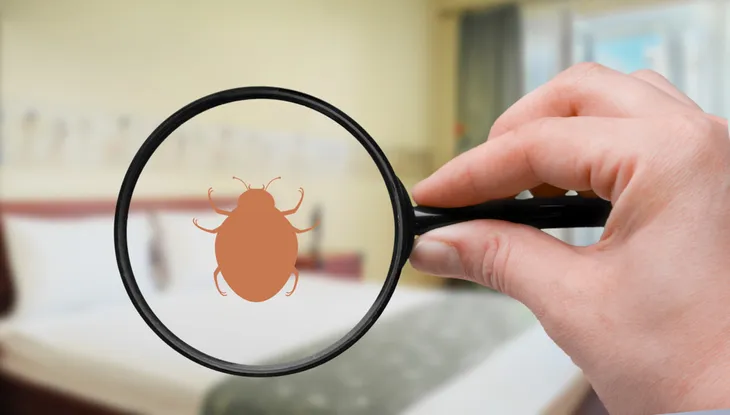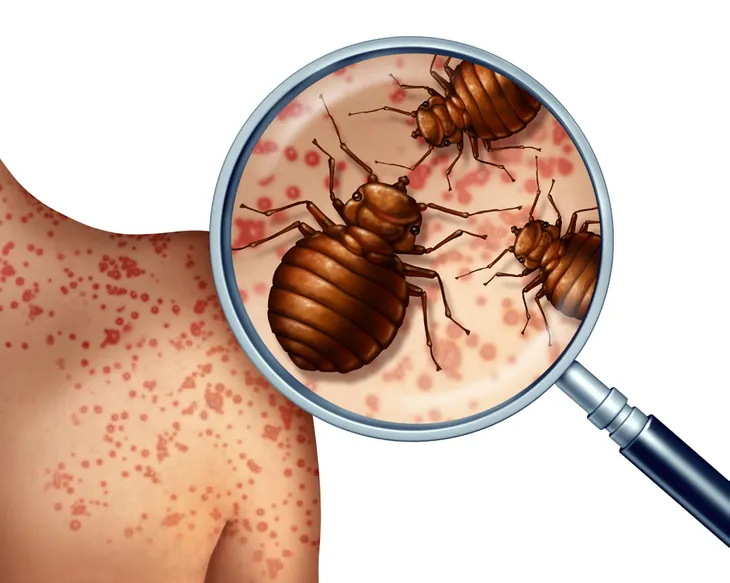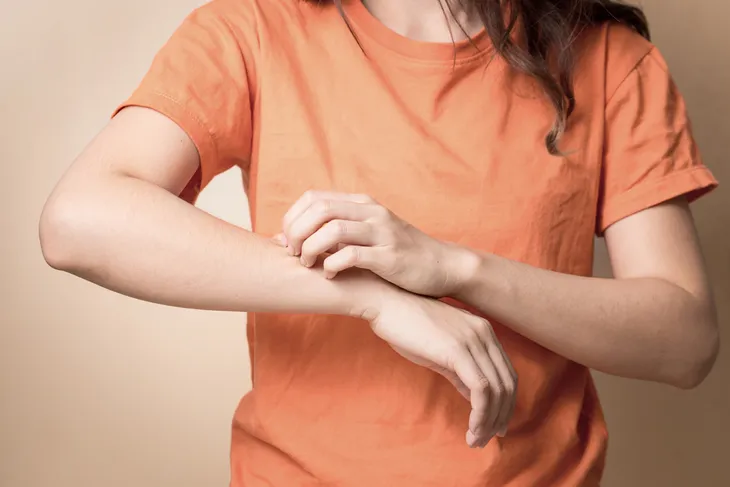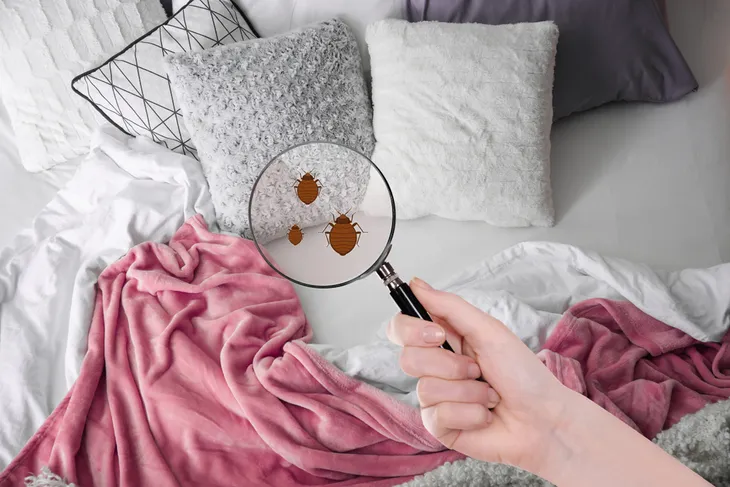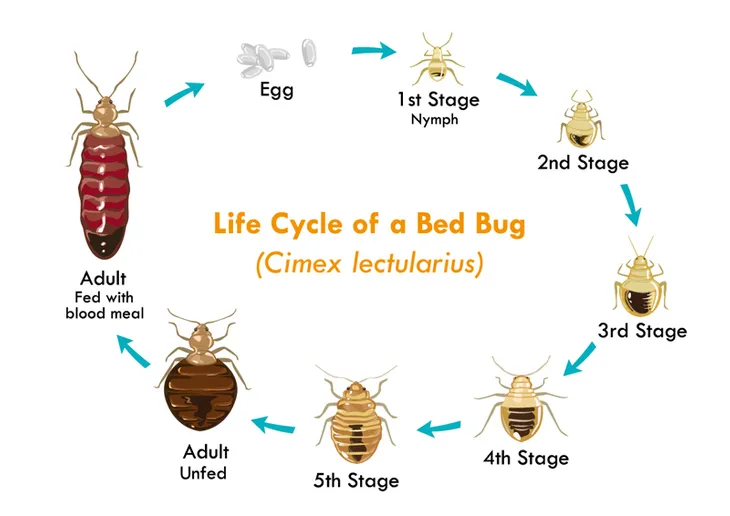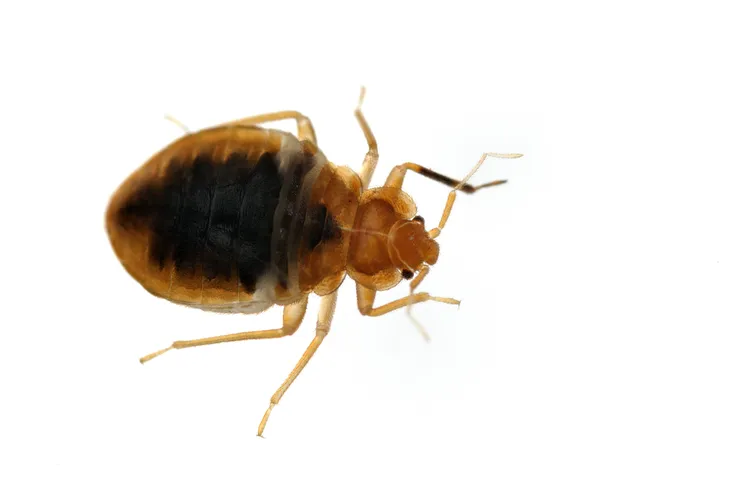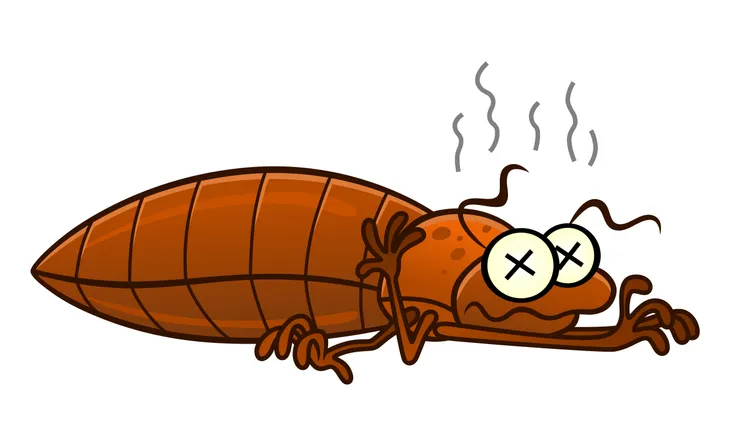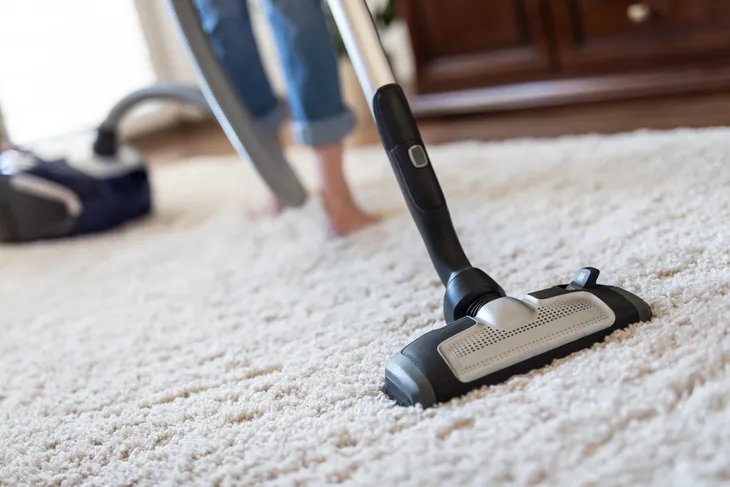These little critters are small, brown, oval shaped insects that live off the blood of either humans or animals. They can grow to be anywhere from 1 to 7-millimeters long. They are flat in shape and look almost like an apple seed.
WebMD explains that immature bedbugs are called nymphs. Before growing into adult bedbugs they will go through five stages. During each stage they will shed their skin and require a meal before doing so. If their living conditions are favorable, it only takes them about a month to develop from nymphs to adult bedbugs. Once they are adults, they will produce an average of three generations per year. While they aren’t harmful and don’t transmit any diseases, there’s no denying bedbugs are a major nuisance and inconvenience. If you suspect there are bedbugs living in your home, they must be treated immediately.
To get started, here’s an indepth look at how to spot bedbugs and get rid of them quickly…
1. What Causes an Infestation?
The biggest misconception about bedbugs is that they are associated with filth, but there isn’t any scientific evidence to support that. A bedbug infestation can occur in any person’s home, even those that are sparkling clean. They feed off blood, not dirt and grime. So an infestation will occur anywhere there is food, so any place they can feed on blood. This can be any home, apartment, or hotel.
So how do they end up in our living spaces? Well ,thankfully these insects can’t fly. Their only mode of travel is by human or animal. But don’t be fooled by this limitation because they can still spread quite quickly by traveling along floors, walls, and ceilings. Oftentimes bedbugs enter into the home through luggage, clothing, used furniture, or other items. They can go easily undetected as their small, flattened bodies allow them to fit into tiny spaces that are only the width of a credit card. They are even harder to detect because they don’t create nests or anything noticeable like that. They tend to congregate together in groups, usually in small hiding spaces. Their initial hiding spot like usually someplace like a mattress, box spring, bedframe, or headboard.
Once they’ve made it into the home, an infestation can occur if female bedbugs lay eggs. Females can lay hundreds of eggs throughout their life. These eggs are extremely hard to spot as each egg is about the size of a speck of dust.
2. When do They Bite?
As we mentioned earlier, bedbugs are most active at night, so you’re likely to develop symptoms after sharing a bed with them. Bedbugs can bite any part of the body, but they’re more likely to go after areas that are exposed while sleeping. As a result, you’ll likely notice them on the face, neck, arms, and hands. “They feed by piercing the skin and withdrawing blood through an elongated beak,” says WebMD. Bedbugs will feed anywhere from three to 10-minutes before becoming engorged. When they are done feeding, they will crawl away and often go unnoticed.
It is possible to have bedbugs and not notice them for several weeks because they don’t feed every night. They can go several days without eating so it may take several weeks to realize there is a problem. At this point, the infestation will only become worse.
Symptoms
3. Red Bite
According to Healthline, the area of the skin that has been bitten by a bedbug will become red and swollen with a dark spot at the center of each bite. The bites often appear in lines or clusters with multiple bites grouped together.
For some people it’s harder to spot whether bedbugs are in their home because they won’t develop any symptoms. On the other hand, some people can have an allergic reaction to them or in other cases they can become infected. If this happens, they may develop into fluid-filled blisters.
4. Itchy
The bite of a bedbug isn’t dangerous and at first it might not even be painful. But as time goes on, they may turn into itchy welts, says WebMD. Since these bites are small, red, and itchy, many people mistake them for the bite of another insect like a mosquito. The only way to confirm whether the bite is from a bedbug is to find the bedbugs themselves.
While it may be hard not to, try to avoid scratching these bites. Scratching these bites will only cause them to bleed or become infected. In addition to being itchy, Healthline says they can sometimes cause a burning sensation.
5. Sweet, Musty Odor
Bedbugs secrete an “offensive, musty odor” from their scent glands, says WebMD. This is one of the ways that bugs communicate. Even though WebMD describes this smell as offensive and musty, others have described it as sweet and musty. The smell will become more pronounced as the infestation grows. In addition to actually spotting the bedbugs themselves, this is one of the best ways to identify whether or not there is a bedbug infestation.
6. Specks of Blood
Another common sign of bedbugs is blood stains on the sheets or pillow cases, says WebMD. This is due to the fact that bedbugs feed on blood. Whether you notice specks of blood on your sheet or other signs on this list, this can be a good indicator of whether or not you’re dealing with bedbugs. These specks of blood can appear on any kind of upholstered furniture like a couch or mattress, as well as the sheets and clothes. You should check all areas separately and closely.
7. Exoskeletons
We touched on this earlier, but immature bedbugs (also called nymphs) will shed their outer shell several times before growing into adult bedbugs. This shedding process is known as molting. On the way to becoming an adult, a nymph will shed an exoskeleton five times in the span of about a month. In addition to all the other signs on this list, you should also be looking for any signs of an outer shell around the suspected infested area.
8. Excrement
If you can’t spot the bedbugs themselves, you’ll likely spot their excrement. According to WebMD, this will look like “dark, or rusty spots” and can be found on the sheets, mattress, your pajamas, and even the walls. In addition to excrement, you should also be looking for eggs. These eggs are white and oval shaped. They are extremely small — about the size of an apple seed.
To find bedbug excrement, remove all bedding and check it carefully. You should even remove the dust cover on the bottom of the box spring and examine the seams in the wood framing. WebMD advises peeling back the “fabric where it is stapled to the wood frame.” Remember, bedbugs can hide in very small spaces that are as thin as a credit card. Other places to check are around the bed, inside books, telephones, radios, edge of the carpet, and even in electrical outlets.
9. Treatment: Bites
Bedbug bites aren’t dangerous, harmful, nor do they transmit any diseases. As a result, the treatment for them is rather simple. In most cases, Healthline explains these bites will get better on their own in about two weeks. The most common treatments of bedbug bites are an anti-itch cream or calamine lotion. You may also try taking an oral antihistamine to reduce the itching and burning. Lastly, there are some over-the-counter pain relievers that can help reduce swelling and pain.
There are also a few at-home remedies you can try. Healthline recommends soothing bitten areas with a cold cloth or ice pack wrapped in a towel. You can create a thin paste out of baking soda and water and spread it over the affected area. There are also some essential oils that may help.
It doesn’t happen often, but in some rare cases people do develop an allergic reaction to bedbug bites. If you spot signs of an allergic reaction, call 911 immediately. You should also be wary of the fact that bedbug bites can cause an infection called cellulitis. “To reduce the risk of infection, wash the bites with soap and water and try not to scratch them,” writes the source.
10. Treatment: Living Space
Now onto treating the space where bedbugs live. WebMD goes through a step by step process of how to treat bedbugs in your living space. The first task is to clean any bedding, linens, curtains, and clothing in hot water. Once that is done, throw them in the dryer on the hottest setting. Along with all of these things, you’ll need to make sure there are no bedbugs on other items in the living space, such as stuffed animals or shoes. If any of the items can’t be throwin the washer, put them in the dryer.
Now onto the mattress. Before vacuuming, use a brush to scrub down the entire mattress. Make sure to get into any small spaces like the seams. Vacuum the mattress and around the bed. Do it frequently. After vacuuming, take the vacuum bag, place it in a plastic bag and take it outdoors. “Encase mattress and box springs with a tightly woven, zippered cover to keep bedbugs from entering or escaping,” writes WebMD. The source notes that bedbugs can live up to a year without feeding, so you’ll need to keep this mattress cover on for at least that amount of time. This will ensure they are dead and can no longer spread.
Check the surrounding area for any cracks in the plaster or wallpaper. If there are any, repair them. These are places where bedbugs can hide. You should also remove any clutter around the bed.
11. Bed Bug Extermination
When treating bedbugs, the only way to do it properly and ensure they won’t return is to completely exterminate them. The tricky part is that these insects are resilient and they’re so small, so they can be easily overlooked. If bedbugs are on a place like your mattress, you can keep it covered for a least a year, but the best thing to do would be to replace the mattress entirely.
Another technique to help control the infestation and completely get rid of any and all bedbugs is to use a chemical treatment, says WebMD. Before using just any chemical product, check the label. If you’re treating an infestation in your bedroom, make sure the label notes that the product can be safely used on things like bedding and a mattress. Some insecticides can be harmful.
The best way to ensure you are treating the problem safely and effectively is to hire a professional. You should be able to find a pest control professionals that deals specifically with bedbug extermination.
12. How to Prevent Them
There aren’t many ways to prevent bedbugs entirely because an infestation is usually just a stroke of bad luck. All it takes is to come into contact with one and have it spread into the home. However, there are some simple things around the house that a person can do to help prevent them or spot them earlier. You should keep clutter to a minimum. This will give bedbugs less places to hide. You should also vacuum frequently. If you’re nervous about not being able to spot an infestation, remember that light colored mattresses are better for seeing bugs, or other signs of them including specks of blood or excrement.
Lastly, if you live in any kind of shared environment like an apartment building, each unit should be sealed properly. To do so, install a door sweep at the bottom of the door and seal any cracks and crevices in the walls. This way if any other resident has bedbugs, they cannot travel into your apartment. At least not on their own.

